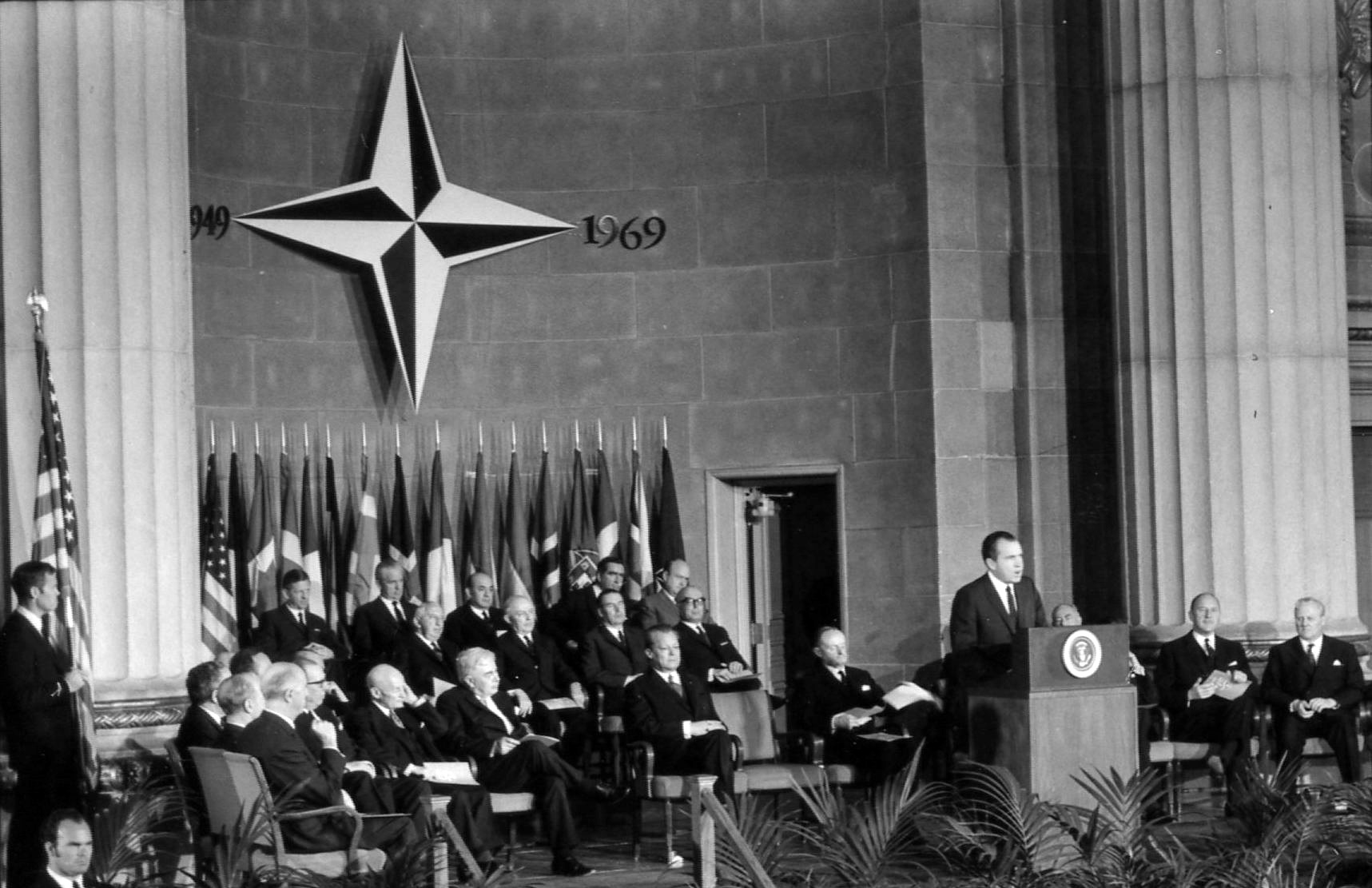Nixon’s first trip abroad as president was a tour of the major European cities. As he traveled through Brussels and London, West Berlin and Paris, President Nixon carefully evaluated the collective concerns faced by Western Europe and the United States, and NATO’s potential role in undertaking such matters. A few weeks later, on the twentieth anniversary of the North Atlantic Treaty Alliance, he recalled his visit to Europe, and set forth his vision for NATO:
On my recent trip to Europe I met with world leaders and private citizens alike. I was struck by the fact that our discussions were not limited to military or political matters. More often than not our talks turned to those matters deeply relevant to our societies.
President Nixon believed that NATO needed to take on “a social dimension to deal with our concern for the quality of life in this last third of the 20th century.” He felt that issues such as environmental protection and urban development concerned NATO because they went beyond matters of peace and defense and struck at the heart of the everyday lives of the people protected by the alliance.
President Nixon’s vision of NATO was in part a component of his larger foreign policy goals. An era of détente inherently meant that NATO needed a transformation. If the East-West arms race was going to give way to productive negotiations on arms limitations, the old military alliance would lose part of its relevance. By calling for the creation of a committee on the challenges of modern society, President Nixon sought to repurpose NATO for the 1970s.
While mixed reaction surrounded the President’s call to action, on November 6, 1969, the first meeting of the Committee on the Challenges of Modern Society was called to order by NATO Secretary-General Brosio. Member nations proposed studies regarding air and water pollution, road safety, and disaster assistance, which generated substantive results within the first few years. The CCMS quickly expanded to include non-NATO members Sweden, Japan, Yugoslavia, and Mexico in dealing with such social issues.
Luke Nichter, author of Richard Nixon and Europe: The Reshaping of the Postwar Atlantic World, argues that the CCMS “marked a formal entrance of the alliance into the era of détente.” In that light, détente produced more than relaxed tensions between the superpowers and their respective alliances. Détente allowed for a military based alliance to work for the betterment of society on an international scale. Today, the spirit of President Nixon’s CCMS continues within NATO’s Science for Peace and Security Committee.

